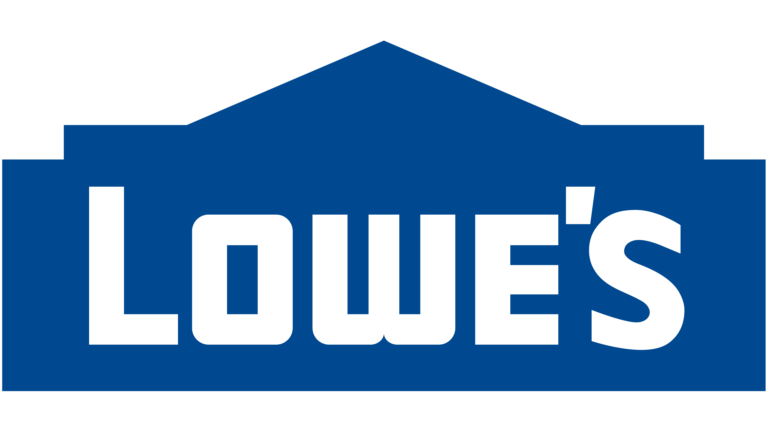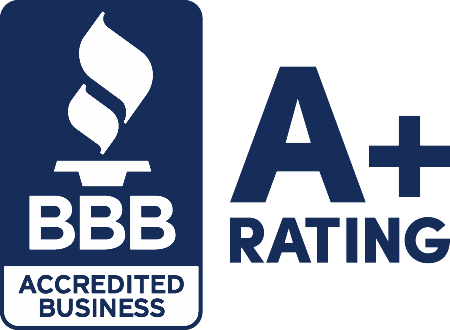What is Accounts Receivable (A/R) Management?

Accounts receivable (AR or A/R) is a list of payments owed to a company. Many companies extend credit to clients to grow their customer base and provide business-friendly terms.
When a company provides goods or services on credit, it tracks transactions in the accounts receivable ledger. The money owed to the company represents an asset to the business. However, late payments and non-payment create cash flow issues that can halt a business’s growth and even lead to bankruptcy.
AR management is essential to staying on top of money owed and ensuring the business collects. It outlines the company’s policies and procedures for invoicing customers, tracking amounts due, and collecting customer payments.
Effective AR management helps businesses establish healthy cash flow and minimize the time and money spent on collections. When a company establishes lines of credit for its customers, it must implement a plan to manage owed payments.
Why is A/R Management Important?

A/R impacts a business’s accounting, cash flow, and profits. Effective accounts receivable processes help reduce errors and late payments.
Here are some reasons why A/R management is important to any business.
Tracking Money Owed & Predicting Cash Flow
Businesses must know how much they spend and how much they earn. Tracking the money owed to the company is a vital part of understanding both.
It also helps with financial forecasting and maintaining cash flow.
Accurate Bookkeeping
Companies report A/R on financial statements as an asset. Every business must keep accurate records for reporting to stakeholders and taxes.
Proactive Collections
An efficient accounts receivable management plan lets a business know when to send reminders and past-due notices for outstanding invoices.
Using an A/R aging report allows your collections team to take a proactive strategy rather than reacting when a company doesn’t receive payment.
Reduce Errors & Improve Efficiency
Setting an AR management policy keeps everyone on the same page. The sales team and accounting department should have a seamless process for approving credit, invoicing customers, and tracking transactions in A/R.
Collections should have a transparent process for sending payment reminders and processing payments. When all departments work together following a detailed management plan, the company reduces errors and saves time and money on A/R procedures.
What are the Steps in A/R Management?

There are several steps a business should take to manage accounts receivable.
Defining Credit Policy & Terms
Your business’s credit policy includes how customers get approved, how long customers must pay, and what happens in the event of non-payment. Stating the credit policy in clear terms upfront helps the customer understand their obligations. It also creates a legal framework if your business needs to go to collections.
Credit policies should include payment methods, deposit or down payment requirements, late payment fees, or early payment discounts. Invoices should reflect the credit policy as well.
Credit Approval Process
Deciding to extend credit to customers presents some challenges. For one thing, your business needs the revenue to support cash flow. You’re also taking a risk if the customer doesn’t pay.
Some companies run credit checks on their customers before extending credit. That’s not always possible, though. In most cases, the customer has reasons for needing a delayed payment.
Talk to your customers and ask why they need the delay and how they’ll get the money to pay the invoice by the due date. Extending credit is most common in the business-to-business (B2B) space.
Sometimes the company must wait for its own A/R revenue to come in before paying off its accounts payable.
Accurate Invoicing
Invoices should list the goods or services rendered, the amounts for each, the customer’s name and information, and due dates.
When extending credit, the customer agrees to specific terms. Ensure those terms are reflected on the invoice.
Make sure your invoices look professional, are easy to read, and include your company’s branding. Solid invoicing practices ensure you and your customers are on the same page. It also helps to have detailed information on what’s owed if a payment dispute arises.
A/R Tracking & Reporting
Tracking and reporting are essential parts of an AR management plan. Companies must have a process in place to understand when and how they’re getting paid and when to send payment reminders.
In addition to tracking A/R, companies should also maintain customer data. Some businesses use CRMs to track customer payment patterns and accurately forecast future payments. In addition, CRMs help to manage the relationship with the customer and improve service.
Setting Up a Collections Plan
The first component of a collections plan is the in-house collection activity. This includes sending the initial invoice and payment reminder before the due date.
It also includes late payment reminders and fees, if any. In-house collections could also involve working with customers to set up payment plans or other arrangements.
Unfortunately, customers sometimes don’t pay their invoices, no matter how proactively your company pursues payments. There is a wide range of reasons why customers are unable to pay. But your business must collect payments, which sometimes means working with a collection agency.
Try to find an agency with good rates and proven success in your industry. Hopefully, you’ll never need to turn bad debt invoices over to a collection agency, but it’s best to have a plan just in case.
Frequently Asked Questions

Here are some of the commonly asked questions about managing accounts receivable.
What are the KPIs for Managing Accounts Receivable?

Part of tracking and reporting accounts receivable is keeping an eye on key performance indicators (KPIs). Here are the most valuable KPIs to track for accounts receivable.
Daily Sales Outstanding (DSO)
Daily Sales Outstanding (DSO), also called days receivables or average collection period, tells you how long your sales get held up in receivables before you collect on the payment. DSO also provides insight into the performance of your collections team, especially when you monitor it over time.
If your DSO keeps going up from month to month or quarter to quarter, there is an issue with collections. DSO is a component of the cash conversion cycle.
Before calculating Days Sales Outstanding (DSO), you need to decide which length of time you want to review. The accounting period or accounting term is a crucial part of the equation.
Most companies review their DSO by month, quarter, or year. Once you decide which accounting term to use, you can apply the other parts of the formula.
The formula to calculate DSO is:
(Current accounts receivable balance ÷ total net credit sales revenue during the accounting term) x number of days in the accounting term = DSO
Accounts Receivable Turnover Ratio
The accounts receivable turnover ratio is an accounting formula that shows how effective your company is at collecting unpaid invoices. It is an essential metric in understanding the value of your A/R department.
The turnover ratio helps you understand how long it takes to collect payment for outstanding debt during the accounting term. An accurate understanding of when and how money comes into your business helps predict and plan your cash flow.
The accounts receivable turnover ratio formula is:
Net annual credit sales ÷ Average accounts receivable = Accounts Receivable Turnover
The higher the turnover ratio, the more efficient your company is at collecting unpaid debt. However, be careful that your policies are not restrictive that you’re losing on sales.
Conversely, a lower ratio doesn’t necessarily mean your company is dealing with bad debt. It depends on your specific terms and if your customers need more than 30 days to pay the invoice.
Collections Effectiveness Index (CEI)
The collections effectiveness index tracks the percentage of unpaid invoices a business successfully turns into cash.

You want your CEI to be as close to 100% as possible. A lower CEI indicates the company is likely extending credit to customers who aren’t creditworthy.
Average Days Delinquent
Average Days Delinquent (ADD) tracks the number of days past due invoices go unpaid. You want as low of an ADD as possible.
You likely need to improve billing and customer communication if your ADD is higher.
How Can My Business Improve Accounts Receivable Management?

Several strategies can help your business improve A/R management.
Make It Easier for Customers to Pay
The easier it is for customers to pay, the more likely they will pay on time. Consider making payment processing more convenient with ACH transfers, online payments, and systems for credit card payments.

Some small businesses even use services like CashApp for Business to provide every possible option to pay.
Managing Customer Data & Relationships
In most cases, businesses have ongoing relationships with customers who purchase on credit. Keeping track of their history with the company helps anticipate their needs and payment patterns.
Understanding customer data also helps when talking to customers and building relationships. Sometimes, all you need to do is get on the phone and talk to your customers to increase timely payments.
Automation
Automating your accounts receivable process can reduce time spent on A/R activities and errors. Using automated invoicing and payment reminders helps ensure timely payments.
There are many A/R automation platforms available, with different costs and services. Try to find one that meets your business needs and is within your budget.
Some businesses partner with full-scale accounts receivable management companies that provide accounting services, automation, billing, and reporting.
Early Payment Options with Invoice Financing
Some companies use early payment discounts to incentivize customers to pay, but it’s still difficult to predict cash flow since you don’t know who will take advance and who won’t. Another way to receive early payment at a discounted rate is with invoice factoring.
In invoice factoring, you sell your receivables at a discounted price to a third-party factoring company. The factoring company then issues a cash advance for a percentage of the purchase price, called the advance rate.
For example, if a business factored receivables worth $15,000 and a discount rate of 2%, it receives $14,700 but not all at once.
Let’s say the same factoring agreement included an advance rate of 95%; the cash advance comes to $13,965.
The remaining $735 goes into a reserve account. The factoring company, which now owns the invoice, collects the payment from the customer.
Once the customer pays the invoice, the factoring company releases the reserve amount to the company.
Invoice factoring rates tend to run higher than other small business financing options. However, it helps a business convert receivables to cash sooner and makes it easier to predict cash flow.
Account Receivables Management – Final Thoughts

Accounts receivable management is a crucial part of selling on credit. Businesses benefit from selling on credit because it expands their customer base, but they must be careful to avoid losing money.
Effectively implementing A/R management strategies helps companies reduce errors, accurately bill customers, and improve payment collection. Using the strategies listed above, your business can manage accounts receivable and maintain cash flow.
For some businesses, invoice factoring is a valuable solution to A/R management as it creates consistency and when and how much a business gets paid. You can contact us to discuss invoice factoring or other small business financing strategies to help your business thrive.













